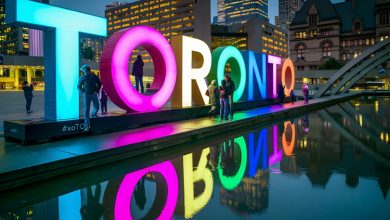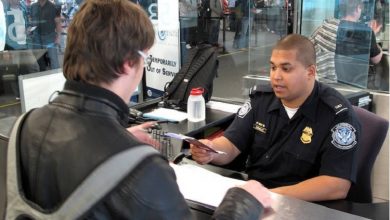Beginning a journey to obtaining a Canadian visa can be a rewarding experience. Thus, opening doors to unparalleled opportunities and gearing you towards untapped treasures. Though, this can be an arduous task these tips on the easiest ways to get Canadian Visa will be a guide.
So, if you’re here, be ready to explore one of the most diverse and welcoming countries on Earth. Whether you are drawn by the breathtaking landscapes, rich culture, friendly communities, vibrant cities, or even finding a greener pasture. Here, is a place to be.
Canada has become a sought-after destination for individuals seeking a fresh start. However, to embark on this, you need to obtain a Canadian visa. Which is an official authorization granted by her government to allow foreign nationals to enter the country for various purposes, such as tourism exploration, visit, work, study, or family reunion.
Hence, this content will focus on the easiest ways to get Canadian Visa. Also, on the easiest routes available. Though the immigration process may seem like a difficult task, armed with the right knowledge, it can be a seamless and achievable endeavour.
So, if you are ready to kick off, you should begin by choosing what visa type and selecting the one that suits your purpose of travel. Hey! Let’s break down the key Canadian visa categories to make this process of obtaining a visa seem like a breeze.
Types Of Canadian Visa
1. Visitor Visa
This visa is designed for individuals seeking to experience Canada for leisure, tourism, or to connect with friends and family. While it typically allows stays of up to six months, extensions may be granted under special circumstances. To strengthen your application, focus on demonstrating your strong ties to your home country, outlining a detailed travel itinerary showcasing your planned activities, and providing clear proof of sufficient financial resources to comfortably cover your entire stay in Canada.
Remember, a well-constructed application highlighting these key points will increase your chances of securing this visa and enjoying your Canadian adventure.
2. Work Visa
The work visa is tailored to anyone aiming for exciting job opportunities in Canada. We’ll explore four main avenues: securing a job with a designated Canadian employer who holds a positive Labour Market Impact Assessment (LMIA), navigating the Express Entry system, utilizing the Provincial Nominee Program (PNP), and obtaining specific work permits. Throughout your application journey, remember to emphasize your unique skills, educational background, and any enticing job offers.
Attending job fairs or securing a Canadian job offer can significantly strengthen your application, so be sure to leverage these opportunities whenever possible. With the right approach and resources, landing your dream job in Canada is well within reach!
3. Study Visa
Tailored for aspiring students embarking on academic journeys at Canadian institutions, this program welcomes those who possess an official acceptance letter, adequate financial backing to support their studies, and a history clear of criminal convictions. To secure your place, let your application shine light on your unwavering dedication to academic excellence, your responsible financial planning, and a heartfelt commitment to returning home once your program culminates.
4. Express Entry System
An excellent approach to skilled immigration is facilitated through a points-based system. This system takes a comprehensive view of applicants, assessing their age, educational background, work experience, and language proficiency, among other relevant factors. However, the core emphasis lies on skills and qualifications. The higher an applicant’s score in these areas, the greater their chances of receiving an Invitation to Apply (ITA) and potentially securing residency.
5. Super Visa
The Super Visa program is specifically designed for parents and grandparents of Canadian citizens or permanent residents. This program allows eligible applicants to visit Canada for extended periods, with multiple entries permitted for up to two years per visit. To obtain a Super Visa, applicants must demonstrate their kinship with the sponsoring family member, prove the sponsor’s financial stability to support their visit, and maintain valid health insurance coverage throughout their stay in Canada.
Essentially, the program aims to facilitate family reunification for extended periods while ensuring the sponsored individual’s well-being during their visit.
6. Temporary Resident Permit (TRP)
The Temporary Resident Permit (TRP) cater to individuals otherwise ineligible for entry into Canada who have compelling and urgent reasons for a temporary stay. It allows for visits lasting up to six months, with variations depending on the specific type of TRP. Obtaining this permit hinges on providing strong evidence of the visit’s necessity and urgency, accompanied by a thorough explanation of why the TRP is the only suitable immigration option for your situation.
7. Spousal Sponsorship
This application seeks permanent residency in Canada for the purpose of uniting with a spouse who is already a Canadian citizen or permanent resident. The application hinges on sponsorship by the said spouse, who will demonstrate their ability to financially support the applicant and fulfill the necessary obligations for a period of three years following the applicant’s arrival in Canada.
The applicant aims to establish a permanent life alongside their spouse and contribute to the Canadian community.
8. Rural and Northern Immigration Pilot
This initiative offers permanent residency to individuals from small and rural communities, providing them with invaluable help and support as they relocate and integrate into a participating community. Securing a job offer within the chosen community is the key to unlocking this pathway to permanent residency, allowing skilled individuals to contribute their talents while receiving the support they need to thrive in their new environment.
This program seeks to bridge the gap between rural and urban opportunities, fostering mutual growth and development.
9. Atlantic Immigration Pilot
Seeking to address the specific workforce demands of the Atlantic provinces, this permanent residency visa stream prioritizes applicants who have already been offered a job with an employer based in this region. By focusing on individuals who have secured employment before arriving, this visa aims to directly fill existing labour market gaps and contribute to the long-term economic growth of the Atlantic provinces.
10. Provincial Nominee Program (PNP)
Recognizing the unique needs of each region, this nomination-driven program offers flexible durations that span diverse provincial settings. Tailored to align with specific provincial requirements, the application focus ensures a targeted approach that effectively addresses local priorities and fosters meaningful impact. In essence, this program prioritizes regional specificity and customized solutions, empowering each province to chart its own path towards success.
11. Family Sponsorship
This application aims to achieve permanent residency in Canada and reunite with close relatives who are already Canadian citizens or permanent residents. By leveraging the family sponsorship program, the applicant seeks to establish a lasting presence in Canada and build a closer personal connection with their loved ones. The focus rests on securing sponsorship from these qualifying relatives, paving the way for a long-term future in Canada.
12. Caregiver Program
Aspiring caregivers are invited to embark on a journey to permanent residency in Canada! This unique program grants skilled individuals the incredible opportunity to utilize their talents in caring for the elderly, sick, and physically challenged members of Canadian society. By showcasing their relevant experience and qualifications, successful applicants can secure not only fulfilling work, but also the chance to build a lasting new home in this vibrant and welcoming nation.
So, if you possess a compassionate heart and a passion for making a difference in the lives of others, embark on this rewarding path to Canadian residency and let your caring spirit flourish!
13. Self-Employed Person Program
The Self-Employed Person Program visa in Canada is a pathway for passionate and experienced individuals to immigrate permanently by establishing themselves as independent entrepreneurs within the country. This program caters specifically to those skilled in cultural activities or athletics, with the aim of enriching and invigorating Canada’s cultural and athletic landscape.
To qualify, applicants must possess at least two years of relevant experience and demonstrate their ability to contribute significantly to their chosen field, scoring a minimum of 35 points on a comprehensive point system. If you’re a self-driven individual with a strong passion for your craft and a desire to share it with Canada, the Self-Employed Person Program visa might be the key to unlocking your Canadian dream.
14. International Experience Canada (IEC)
International Experience Canada, or IEC, is a program that opens doors for young people from participating countries to experience the magic of living and working in Canada. It fosters cultural exchange and personal growth by offering opportunities to travel, gain professional experience, and explore the beauty of the Canadian landscape, all within a two-year timeframe.
Whether you’re seeking adventure, career development, or simply a change of scenery, IEC welcomes you with open arms and endless possibilities.
15. Start-up Visa
The Canadian Start-up Visa program welcomes ambitious and creative entrepreneurs seeking to bring their innovative ideas to life in the country. By attracting these talented individuals, Canada aims to foster economic growth and job creation. While the duration of the program can vary depending on specific agreements, it typically involves an initial phase where the entrepreneur obtains a temporary work permit.
After successfully fulfilling their commitments and achieving agreed-upon milestones, they can transition to permanent residency, gaining the freedom to establish their venture and contribute meaningfully to the Canadian economy. To be eligible, applicants must demonstrate a strong commitment to a designated board supporting the program, possess ownership of a qualifying business, fulfill their basic civic duties in their home country, and have a minimum level of education.
When you understand these visa types, it will not only help you choose the right category but also streamline your application process.
14 Easiest Steps To Get A Canadian Visa
Understand The Visa Types: Here, you familiarize yourself with the different visa types such as tourist, work, study, and family visas. Choose the one that suits your purpose of visit.
- Make A Thorough Research
- Consult Immigration Experts: Seek advice from an immigration consultant or lawyer specialising in Canadian immigration. Get valuable information and be updated.
- Fill Up The Comprehensive Application: Pay attention to detail when filling out your application forms and as well, provide accurate and complete information to avoid delays or rejection.
- Demonstrate Financial Stability: Showcase your financial stability by providing proof of funds to cover your expenses during your stay.
- Create a Strong Travel Itinerary: Craft a detailed travel itinerary. This demonstrates the purpose and legitimacy of your visit. Here, take your time to spell out all you need to do so you can have a swell time.
- Get Health Insurance
- Provide a Letter of Invitation: If applicable, obtain a letter of invitation from a Canadian host. This can be a family member, friend, or business contact. The letter should detail the purpose of your visit and your relationship with the host
- Highlight Ties to Your Home Country
- Language Proficiency: If required, take language proficiency tests such as IELTS or CELPIP to prove your ability to communicate effectively in English or French.
- Submit a Clean Criminal Record: Provide a recent and clean criminal record.
- Attend a Canadian Job Fair: This avails you to potential employers and can enhance your chances of securing a job offer while building your networking space.
- Enroll in a Canadian Educational Institution
- Express Entry System
- Stay Updated on Immigration Policies: Check and be updated on Canadian immigration policies.
How To Apply For A Canadian Visa
Step 1: Identify the Right Visa Type
Choosing the right visa is your first critical step. Canada offers various visas for visitors, students, and workers. Utilize their online tools to match your trip’s purpose and duration with the perfect visa. Remember, the right choice avoids delays and smooths your Canadian adventure!
Step 2: Gather Necessary Documents
Each visa type has specific documentation requirements. Common documents include
- Passport
- Visa application form
- Passport-sized photos
- Proof of funds
- Travel itinerary
- Letter of invitation (if applicable)
- Educational credentials (for study permits)
- Job offer letter (for work permits)
Step 3: Complete the Online Application
The majority of Canadian visa applications are submitted online. Create an account on the IRCC website and complete the online application form. Provide accurate and the right information to avoid delays or complications
Step 4: Pay the Application Fees
Each visa category comes with its own set of application fees. Go ahead and make the payment. Then, keep the payment receipt for reference
Step 5: Schedule A Biometric Appointment
Once you’ve submitted your online application and payment, it’s time to schedule your biometric appointment. Remember, this isn’t just a casual drop-in – you’ll need to book a specific time slot at a designated Visa Application Centre (VAC) in your area. Don’t wait until the last minute, as appointments can fill up quickly, especially during peak travel seasons.
Head to the official Canadian government website, choose your preferred VAC and time slot, and bring your supporting documents and confirmation email with you. The biometric process itself is quick and painless, involving a digital photograph and fingerprint scan.
Step 6: Processing Period
Once your application is submitted, be patient. The processing time varies depending on the type of visa and other factors. Monitor the status of your application through the online portal.
Step 8: Receive the Decision
Once your application is processed, you’ll receive a decision. If approved, follow the instructions to obtain your visa. If rejected, carefully review the reasons for refusal and consider your options, such as appealing the decision or reapplying with the necessary adjustment.
Conclusively,
Following these 15 essential steps empowers you with the easiest ways to get Canadian Visa. As you embark on this journey, bear in mind that meticulous preparation, unwavering attention to detail, and a resolute commitment to adhering to regulations serve to substantially enhance your prospects of acquiring the highly-desired Canadian visa.
In essence, the most efficient paths to a Canadian visa are paved with meticulous preparation, effective utilization of available resources, and the presentation of a compelling argument for your intended visit.





